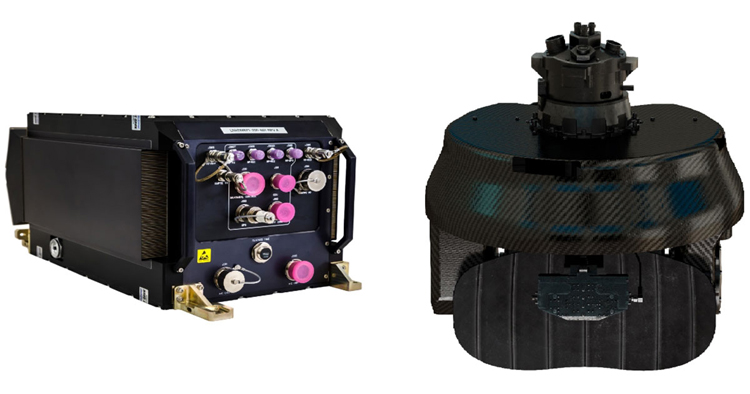INDIAN ARMED FORCES CHIEFS ON OUR RELENTLESS AND FOCUSED PUBLISHING EFFORTS

The insightful articles, inspiring narrations and analytical perspectives presented by the Editorial Team, establish an alluring connect with the reader. My compliments and best wishes to SP Guide Publications.

"Over the past 60 years, the growth of SP Guide Publications has mirrored the rising stature of Indian Navy. Its well-researched and informative magazines on Defence and Aerospace sector have served to shape an educated opinion of our military personnel, policy makers and the public alike. I wish SP's Publication team continued success, fair winds and following seas in all future endeavour!"

Since, its inception in 1964, SP Guide Publications has consistently demonstrated commitment to high-quality journalism in the aerospace and defence sectors, earning a well-deserved reputation as Asia's largest media house in this domain. I wish SP Guide Publications continued success in its pursuit of excellence.
- Prime Minister Modi Visits Punjab’s Adampur Air Base, Interacts with Airmen after Successful ‘Operation Sindoor’; Stern Message to Pakistan
- The layered Air Defence systems that worked superbly, the key element of Operation Sindoor
- Operation Sindoor | Day 2 DGMOs Briefing
- Operation Sindoor: India strikes back with Precision and Purpose
- Operation Sindoor: Resolute yet Restrained
- India’s Operation Sindoor Sends a Clear Message to Terror and the World – ‘ZERO TOLERANCE’
- Japan and India set forth a defence cooperation consultancy framework, talks on tank and jet engines
- Terrorist Attack in Pahalgam in Kashmir: Unfolding a long surgical war against PAK
- Lt General Pratik Sharma takes over Command of Indian Army's Northern Command
GA-ASI Adding AESA Antenna to EagleEye Radar
New Antenna Will Double Range and Enable Additional Radar Enhancements

General Atomics Aeronautical Systems, Inc. (GA-ASI) is continuing its support of EagleEye multi-mode radar development with a company investment to add an Active Electronically Scanned Array (AESA) antenna and associated software that will increase range and deliver significant mode enhancements. AESA will be a "drop-in" hardware upgrade to the existing EagleEye radar and could be an option for the new Gray Eagle 25M (GE 25M) aircraft assembly when ready.
"We expect the AESA antenna to more than double the range for EagleEye," said Jeff Hettick, GA-ASI vice president of Agile Mission Systems. "The increased range and optimized multi-mode performance of the radar are perfectly tailored to provide deep sensing capability in Multi-Domain Operations (MDO). That will allow the aircraft to operate well outside Weapons Effects Zone of most threat systems adding a layer of survivability supporting the Stand-Off survivability with Stand-In effects of long-range sensors. This is a key component of the Gray Eagle 25M Unmanned Aircraft System being developed for the U.S. Army."
AESA antennas replace the mechanically steered dish antennas of earlier-generation radars with a solid-state, all-electronic emitter. In addition to enhancing the radar's performance, by replacing the motor and other components that physically move the radar dish, AESA greatly improves repairability and reliability.
As part of the EagleEye development, GA-ASI will improve target detection range using Artificial Intelligence/Machine Learning (AI/ML). GA-ASI expects to have a working lab prototype of the new AESA component by the end of this year, with plans to conduct flight tests in 2025 and operational demonstrations on GE 25M after that.
EagleEye is a multi-mode radar that builds on years of pioneering expertise by GA-ASI. Using Synthetic Aperture Radar (SAR), Eagle Eye enables operators to look in detail through clouds, smoke, dust, haze, or other conditions that might obscure a purely visual sensor. And for the first time on the Gray Eagle platform, EagleEye delivers radar-based Full Motion Video (FMV) called "Video SAR," which enables live visual tracking of moving targets via the radar system.
The EagleEye radar performs Moving Target Indication (MTI), detects changes, builds strip maps, and yields other precise insights to analysts, commanders, and operators. With its Maritime Wide Area Search (MWAS) mode, EagleEye also provides a dedicated maritime MTI mode for tracking and targeting vessels and further supports the MDO mission set of the U.S. Army, particularly in support of the U.S. Indo-Pacific Command (INDOPACOM) mission, but also in Europe, Africa and the Middle East where there is an increased need for maritime reconnaissance, surveillance and target acquisition, which is critical to achieve information dominance and overmatch.





